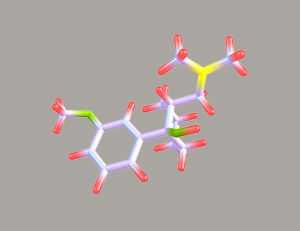
Tramadol is a prescription preparation used to relieve pain in patients with severe injuries, cancer and constant aches. Keep reading to learn more about this drug, its properties and contraindications.
Tramadol (Ultram) Pain Medication Prices
Tramadol (Centrafarm) capsules 50 mg –> from $ 4.16/capsule
Tramadol (Royal) tablets 225 mg –> from $ 4.25/tablet
* Tramadol capsules or tablets delivered to your home after an online consult with healthcare providersTramadol
Tramadol effectively eliminates moderate and severe painsduring the postoperative period. It is used in patients with injuries, biliary colic, myocardial infarction, and during painful diagnostic procedures. In addition, Tramadol has an antitussive effect by suppressing cough.
When taken in therapeutic doses, Tramadol does not cause respiratory depression and does not affect intestinal motor function. Unlike other synthetic opioids, it less inhibits the motility of the digestive system.
Moreover, Tramadol produces a weak effect on the cardiovascular system. The activity of the drug is estimated to range from 1/10 to 1/6 of morphine activity.
How to use Tramadol?
Tramadol is a prescription-only preparation due to a high habit-forming factor. You should always follow the guidelines of your healthcare provider and never increase a dose.Also, don’t use the drug longer than your doctor recommends. Overall, these tips will help you to have safe treatment with Tramadol.
- Don’t use Tramadol with other opioid medications.
- Use the drug at the same time each day regardless of the food intake.
- Avoid crushing, breaking, or dissolving a tablet. Take it whole.
- If you use a liquid form, measure a dose with a special device that comes with a pack. Don’t use a kitchen spoon to measure a dose.
- Only medical specialists can do intravenous (IV) injections.
- Don't crush a tablet with the purpose of inhaling the powder or mixing it with a liquid for intravenous (IV) injection. These actions may result in fatal consequences.
- Don't stop using the medication suddenly since it may cause severe withdrawal symptoms. Your healthcare provider should explain to you how to decrease the dose gradually.
Dosages
The dosage is selected individually, depending on the severity of the pain syndrome and the sensitivity of the patient. The duration of treatment is determined individually as well.
Usually, adults use from 50 to 100 mg of Tramadol orally every 4-6 hours depending on the severity of pain. If the patient doesn’t require a quick analgesic effect, it is advisable to start from the initial dose of 25 mg orally once a day.
It is possible to increase a dose gradually, depending on how the patient tolerates the preparation. The maximum safe dose is 400 mg per day.
If Tramadol is used for chronic pain, your doctor may prescribe extended-release (ER) tablets. It is recommended to start from 100 mg orally once a day and then gradually increasing a dose to 300 mg.
Tramadol Side Effects
Seek medical help if you have any sign of allergic reaction such as hives, face or throat swelling or difficulty breathing, skin rash.
Tramadol can result in slowing your breathing which may have fatal consequences. It is necessary to use naloxone and go to the emergency room as soon as possible.
Consult your doctor as soon as possible if you have:
- noisy breathing or sleep-related breathing disorder;
- slower than normal heart rate;
- lightheadedness;
- seizure (convulsions);
- weakness, extreme tiredness, dizziness, and feeling faint.
There are also common adverse reactions such as:
- gas, bloating, constipation, stomach cramps;
- dizziness and fatigue;
- headache;
- skin itching.
Medical Contraindications of Tramadol
Like any opioid preparation, Tramadol has some contraindications for use:
- Avoid driving a car and performing potentially hazardous activities that require increased attention or mental and motor reactions unless you know how Tramadol affects your mental system.
- Patients with impaired liver or kidney function should begin treatment with the drug with minimal doses.
- It is not recommended to prescribe Tramadol to those patients who have alcohol or drug abuse. Inform your doctor if you have previous or current alcohol/drug addiction.
Before prescribing a medication, inform your doctor if you have:
- shortness of breath, coughing or wheezing attacks;
- asthma;
- intestinal blockage in the absence of an actual physical obstruction;
- if you have recently taken alcohol, opioids, or other narcotic preparations;
- if you have takenan MAO inhibitor (usually, in previous two weeks);
It isn’t recommended to use Tramadol in pediatric patients. Avoid using the preparation during pregnancy since the baby could be born with severe withdrawal symptoms which can result in death. Consult your doctor and weigh all risks and benefits of using Tramadol if you breastfeeding.
Don’t overdose since the adverse effects may result in death. Seek medical assistance if you use Tramadol by accident or ingest more than prescribed by a medical specialist.

